|
Books Should Be Free Loyal Books Free Public Domain Audiobooks & eBook Downloads |
|
|
Books Should Be Free Loyal Books Free Public Domain Audiobooks & eBook Downloads |
|
Books of Memoirs |
|---|
|
Book type:
Sort by:
View by:
|
By: Ik Marvel (1822-1908) | |
|---|---|
 Reveries of a Bachelor
Reveries of a Bachelor
Reveries of a Bachelor, or A Book of the Heart, is a novel by American author Donald Grant Mitchell published under the pseudonym Ik Marvel. Paul, the protagonist, vividly and emotionally recalls his life and loves as he sits by his fireplace smoking a cigar, his old dog sleeping at his feet. He muses on boyhood, the country lifestyle and travel, but especially on the young women he knew, or perhaps imagines he knew, through the years. The first two reveries were originally serialized in a magazine, and subsequently all four were published in book format. A bestseller, it was one of poet Emily Dickinson's favorite books. | |
By: Irving Bacheller (1859-1950) | |
|---|---|
 Silas Strong
Silas Strong
Per the author: "The book has one high ambition. It has tried to tell the sad story of the wilderness itself—to show, from the woodsman's view-point, the play of great forces which have been tearing down his home and turning it into the flesh and bone of cities." But this story is much more than that. It revolves around Silas Strong and his distaste for the modernization and destruction of his beloved forest surroundings, and how it pleases him to teach younger folk how to appreciate that which has been given us... | |
By: Isaac Mason (1822-?) | |
|---|---|
 Life of Isaac Mason as a Slave
Life of Isaac Mason as a Slave
Isaac Mason was born into slavery. As a young man, he escaped to freedom and made a life for himself. An intelligent man, he gave lectures on his experiences and was later encouraged to publish them in book form. | |
By: Isabella L. Bird (1831-1904) | |
|---|---|
 A Lady's Life in the Rocky Mountains
A Lady's Life in the Rocky Mountains
Isabella Bird began travelling while in her early twenties to help alleviate illness that had plagued her since childhood. She was a single woman in her early forties when she made her treck through the Rocky Mountains. A Lady’s Life in the Rocky Mountains details this fascinating account of her travels through a series of letters written to her sister, Henrietta. These letters are filled with beautiful, vivid descriptions of the scenery, the people she encountered, the way of life, and a mountain man named Jim Nugent, that was as rough as they come, but a complete gentleman with Ms... | |
 Among the Tibetans
Among the Tibetans
Isabella L. Bird was an English traveller, writer and natural historian. She was travelling in the Far East alone at a time when such endeavours were risky and dangerous even for men and large, better equipped parties. In "Among the Tibetans", Bird describes her tour through Tibet with her usual keen eye: From descriptions of the landscape and flora to the manners, customs and religion of the local people we get a fascinating account of a world long past. | |
 Korea and Her Neighbors
Korea and Her Neighbors
In this book, Isabella L. Bird, who had been elected a Fellow of the Royal Geographical Society only 2 years prior, describes her travels through Korea from 1894 - 1897 in her well-known style. She went on lengthy trips through the interior of what is today both North- and South Korea and vividly describes the landscapes, people and customs of the "Hermit Kingdom". Isabella's sojourn coincided with a time of great turmoil in Korea. Shortly after her arrival, the Japanese occupied the country, ostensibly to protect their expatriate community... | |
By: Ivan Goncharov (1812-1891) | |
|---|---|
 Oblomov
Oblomov
Oblomov is the best known novel by Russian writer Ivan Goncharov, first published in 1859. Oblomov is also the central character of the novel, often seen as the ultimate incarnation of the superfluous man, a symbolic character in 19th-century Russian literature. Oblomov is a young, generous nobleman who seems incapable of making important decisions or undertaking any significant actions. Spoiled as a child to the point of not even being able to put on his own socks, Oblomov is unprepared to deal with the smallest difficulty of adult life... | |
By: J. M. Barrie (1860-1937) | |
|---|---|
 Tommy and Grizel
Tommy and Grizel
This book continues Sentimental Tommy, also in the catalogue. Tommy grows up and marries Grizel. But life is not only roses and rainbows. This book has all the elements of a good love story, but it is also a book about growing up and finding out your distinct voice in the world. - Summary by Stav Nisser. | |
By: J. Saunders Redding (1906-1988) | |
|---|---|
 On Being Negro in America
On Being Negro in America
A penetrating, insightful, and thoroughly honest view of one's life in the United States as an African-American. - Summary by KevinS | |
By: Jack London (1876-1916) | |
|---|---|
 John Barleycorn or Alcoholic Memoirs
John Barleycorn or Alcoholic Memoirs
Jack London died at the age of forty. In this autobiographical work, London describes his life as seen through the eyes of John Barleycorn (alcohol). There is much controversy about the cause of his death just as there is about alcoholism and addiction. London’s brutally frank and honest analysis of his own struggles and bouts with alcohol was way before its time and more modern theories of addiction. With remarkable candor and insight, London describes the demons and gods he encountered through both friend and enemy, John Barleycorn. | |
 The Cruise of the Snark
The Cruise of the Snark
The Cruise of the Snark (1913) is a memoir of Jack and Charmian London’s 1907-1909 voyage across the Pacific. His descriptions of “surf-riding”, which he dubbed a “royal sport”, helped introduce it to and popularize it with the mainland. London writes: Through the white crest of a breaker suddenly appears a dark figure, erect, a man-fish or a sea-god, on the very forward face of the crest where the top falls over and down, driving in toward shore, buried to his loins in smoking spray, caught up by the sea and flung landward, bodily, a quarter of a mile... | |
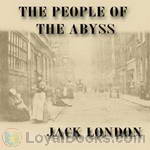 The People of the Abyss
The People of the Abyss
Jack London lived for a time within the grim and grimy world of the East End of London, where half a million people scraped together hardly enough on which to survive. Even if they were able to work, they were paid only enough to allow them a pitiful existence. He grew to know and empathise with these forgotten (or ignored) people as he spoke with them and tasted the workhouse, life on the streets, … and the food, which was cheap, barely nutritious, and foul.He writes about his experiences in... | |
 Road
Road
Jack London credited his skill of story-telling to the days he spent as a hobo learning to fabricate tales to get meals from sympathetic strangers. In The Road, he relates the tales and memories of his days on the hobo road, including how the hobos would elude train crews and his travels with Kelly’s Army. | |
By: Jacob Stroyer (1849-1908) | |
|---|---|
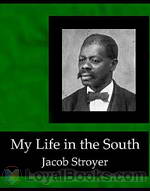 My Life in the South
My Life in the South
My Life in the South is the vivid and touching autobiography of African-American former slave, Jacob Stroyer. It recounts experiences from his early childhood on the planation up to his involvement in the Confederacy's war effort and eventually his experience of becoming a free man. | |
By: Jacob William Wright | |
|---|---|
 The Long Ago
The Long Ago
Short memory of boyhood by a little-known American poet based in Carmel-By-The-Sea, California. | |
By: James Berry (1852-1913) | |
|---|---|
 My Experiences as an Executioner
My Experiences as an Executioner
From 1884 until 1891, James Berry was an executioner. In this time he carried out 131 hangings. In this memoir he writes about the methods he used, and the final moments of some of those he executed. | |
By: James Boswell (1740-1795) | |
|---|---|
 The Life of Samuel Johnson
The Life of Samuel Johnson
Boswell’s Life of Samuel Johnson is widely considered to be the greatest English-language biography ever written. It was revolutionary in its efforts to represent Johnson as he was, celebrating his flaws as well as his genius, and in Boswell’s decision to represent Johnson primarily by quoting his writings and relating personal anecdotes rather than relying on matters of public record. From the time of its publication till now, The Life of Johnson has been one of the most popular and influential books ever written. | |
By: James Fenimore Cooper (1789-1851) | |
|---|---|
 Autobiography of a Pocket-Handkerchief
Autobiography of a Pocket-Handkerchief
Take a fascinating journey from France to America through the "eyes" of a pocket handkerchief. She marvels at the vastness of the universe which the Creator devised and glories in her own fabrication by the young hands of a French peasant. All the while, she sees the intricacies of Providence in her life, as well as those about her. | |
By: James Inglis (1845-1908) | |
|---|---|
 Our New Zealand Cousins
Our New Zealand Cousins
A travelogue of a trip through New Zealand in 1885 with panegyric descriptions of the scenery, elucidations of the progress the country had made since the writer had been there twenty years earlier, encomiums on the differences between New South Wales and New Zealand, and the writer's thoughts on where the two colonies needed to progress in the areas of agriculture, mining, forestry and education. Chapter 20 outlines a brief visit to Hobart on the way home, while the Appendix covers some statistics on the forestry industry in New Zealand and concludes with descriptions of the eruption of Tarawera in June 1886 as reported by the Sydney newspapers. | |
By: James Orton (1830-1877) | |
|---|---|
 The Andes and the Amazon
The Andes and the Amazon
This book, with the subtitle "Across the Continent of South America" describes the scientific expedion of 1867 to the equatorial Andes and the Amazon. The route was from Guayaquil to Quito, over the Cordillera, through the forest to Napo, and, finally, on the Rio Napo to Pebas on the Maranon. Besides this record, the expedition - under the auspices of the Smithsonian Institute - collected samples of rocks and plants, and numerous specimen of animals. The scientists also compiled a vocabulary of local languages and produced a new map of equatorial America... | |
By: James Weldon Johnson (1871-1938) | |
|---|---|
 Autobiography of an Ex-Colored Man
Autobiography of an Ex-Colored Man
Johnson's only novel, The Autobiography of an Ex-Colored Man, was originally published anonymously in 1912. It is a fictional novel written as a memoir of an unnamed biracial narrator who grew up in the South during the Reconstruction and post-Reconstruction eras. It is a story in which the narrator relates how as a young boy he initially assumed that he was white, and how his notions of racial identity were suddenly turned upside down one day—how from that moment on he was inclined to view himself and the world about him from the perspective of blackness. The novel received very little notoriety until Johnson republished it in 1927, this time taking full credit as its author. | |
By: Jane Addams (1860-1935) | |
|---|---|
 Twenty Years at Hull-House
Twenty Years at Hull-House
Jane Addams was the first American woman to be awarded the Nobel Peace Prize. In a long, complex career, she was a pioneer settlement worker and founder of Hull-House in Chicago, public philosopher (the first American woman in that role), author, and leader in woman suffrage and world peace. She was the most prominent woman of the Progressive Era and helped turn the nation to issues of concern to mothers, such as the needs of children, public health and world peace. She emphasized that women have a special responsibility to clean up their communities and make them better places to live, arguing they needed the vote to be effective... | |
By: Jane Barlow (1857-1917) | |
|---|---|
 Irish Idylls
Irish Idylls
Irish Idylls is a collection of short stories about Irish peasantry during the 19th Century. Ms Jane Barlow, an Irish lass, having, unbelievably, an uncertain date of birth, has a turn of phrase that delights and simultaneously enmeshes the reader/listener with compassion for her tableau. She captures the tune and lilt of dialogue so delightfully. A tiny sample: "So, by hook or by crook, Lisconnel holds together from year to year, with no particular prospect of changes; though it would be safe enough to prophesy that should any occur, they will tend towards the falling in of derelict roofs, and the growth of weeds round deserted hearthstones and crumbling walls... | |
By: Jean-Jacques Rousseau (1712-1778) | |
|---|---|
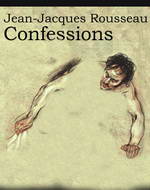 Confessions
Confessions
Considered to mark the emergence of a new literary form, the unvarnished autobiography, Confessions by Jean-Jacques Rousseau was first published in 1782, four years after his death. The philosopher and educationist whose political philosophy is credited with having inspired the French Revolution, Rousseau was a man of immense wit, talent and depth of thinking. His skill in art, music, literature and cooking along with his magnificent body of work in philosophy, politics, education and sociology have made him a legendary figure... | |
By: Jesse James, Jr. (1875-1951) | |
|---|---|
 Jesse James, My Father
Jesse James, My Father
A biography of Jesse James as told by his son, Jesse James, Jr. We are treated to inside tales of Jesse's childhood and home life; what drove him to become a Confederate guerrilla during the Civil War; his life after the war and how he became a wanted man. Since it was written by his son, it is a little biased and we are not told anything about any crimes Jesse and his gang committed. Some of the stories of Jesse's war adventures are a little hard to believe, but a good read nonetheless. | |
By: Johanna Brandt (1876-1964) | |
|---|---|
 The Petticoat Commando
The Petticoat Commando
In introducing the English version of this book I venture to bespeak a welcome for it, not only for the light which it throws on some little-known incidents of the South African war, but also because of the keen personal interest of the events recorded. It is more than a history. It is a dramatic picture of the hopes and fears, the devotion and bitterness with which some patriotic women in Pretoria watched and, as far as they could, took part in the war which was slowly drawing to its conclusion on the veld outside... | |
By: John Aubrey (1626-1697) | |
|---|---|
 Brief Lives Volume II
Brief Lives Volume II
Volume 2 of Aubrey's sparkling gossipy biographical pieces on his contemporaries, including Bacon, Jonson and Shakespeare, Brief Lives' glimpses into the unofficial side of these towering figures has won it an undying popularity, with Ruth Scurr's recent reimagined "autobiography" of Aubrey, breathing new life into this classic for the next generation of readers - Summary by Nicole Lee | |
By: John Beresford (1888-1940) | |
|---|---|
 Diary of a Country Parson
Diary of a Country Parson
The Revd. James Woodforde was an English clergyman, best known for his vivid account of parish life in the 18th century. His diary, edited by John Beresford, remained unpublished until the 20th century. The diary provides a wonderfully full account of the small community in which the diarist lived — of the births and deaths, comings and goings, illnesses, and annual celebrations, along with many other details of daily life. As a churchman, Woodforde himself was conscientious by the standards of his time, charitable and pious without being sanctimonious and again typical of his day, deeply suspicious of enthusiasm... | |
By: John Billings (1842-1933) | |
|---|---|
 Hardtack and Coffee
Hardtack and Coffee
Hard Tack and Coffee: The Unwritten Story of Army Life is a memoir by John D. Billings, a veteran of the 10th Massachusetts Volunteer Light Artillery Battery in the American Civil War. Hard Tack and Coffee is not about battles, but rather about how the common Union soldiers of the Civil War lived in camp and on the march. It covers the details of regular soldier life, including enlisting, how soldiers were sheltered, Army rations, offenses and punishments, a day in camp, boxes from home, foraging , the army mule, hospitals and ambulances, clothing, breaking camp and marching, and other similar topics... | |
By: John D. Rockefeller (1839-1937) | |
|---|---|
 Random Reminiscences of Men and Events
Random Reminiscences of Men and Events
A good book by the oil revolutionist of the 20th century. As they say "Men should listen to experience" and this book is all about the experience of the second highest taxpayer of the US during the 20's. Though it is not in the book, this is a small poem he wrote:I was early taught to work as well as play,My life has been one long, happy holiday;Full of work and full of play-I dropped the worry on the way- And God was good to me everyday. | |
By: John Dee (1527-1608) | |
|---|---|
 The Private Diary of Dr. John Dee And the Catalog of His Library of Manuscripts
The Private Diary of Dr. John Dee And the Catalog of His Library of Manuscripts
| |
By: John Franklin (1786-1847) | |
|---|---|
 The Journey to the Polar Sea
The Journey to the Polar Sea
| |
 Narrative of a Journey to the Shores of the Polar Sea, in the Years 1819-20-21-22, Volume 1
Narrative of a Journey to the Shores of the Polar Sea, in the Years 1819-20-21-22, Volume 1
| |
By: John L. Ransom (1843-1919) | |
|---|---|
 Andersonville Diary, Escape And List Of The Dead
Andersonville Diary, Escape And List Of The Dead
John L. Ransom was the quartermaster of Company A, 9th Michigan Volunteer Cavalry during the American Civil War and a Union prisoner in the infamous Confederate prison at Andersonville, Georgia. This is his diary which he published some few years after the end of the Civil War. Note that in pages 193 through 301 are included 1) List of the Dead and 2) Recapitulation of Deaths By States; both of these sections are omitted from this Librivox reading. The Andersonville National Historic Site, located near Andersonville, Georgia, preserves the former Camp Sumter (also known as Andersonville Prison), a Confederate prisoner-of-war camp during the American Civil War…... | |
By: John Muir (1838-1914) | |
|---|---|
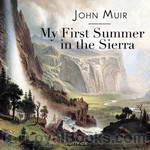 My First Summer in the Sierra
My First Summer in the Sierra
The journal of nature-lover John Muir who spent the summer of 1869 walking California’s Sierra Nevada range. From French Bar to Mono Lake and the Yosemite Valley, Muir was awestruck by everything he saw. The antics of the smallest “insect people” amazed him as much as stunted thousand-year old Juniper trees growing with inconceivable tenacity from tiny cracks in the stone. Muir spent the rest of his life working to preserve the high Sierra, believing that “the clearest way into the Universe is through a forest wilderness.” John Muir (1838-1914) was born in Dunbar, Scotland and grew up in Wisconsin, USA. This recording commemorates the 140th anniversary of that first summer. | |
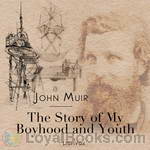 The Story of My Boyhood and Youth
The Story of My Boyhood and Youth
“The only fire for the whole house was the kitchen stove, with a fire box about eighteen inches long and eight inches wide and deep,- scant space for three or four small sticks, around which in hard zero weather all the family of ten shivered, and beneath which in the morning we found our socks and coarse, soggy boots frozen solid.” Thus, with perceptive eye for detail, the American naturalist, John Muir, describes life on a pioneer Wisconsin farm in the 1850’s. Muir was only eleven years old when his father uprooted the family from a relatively comfortable life in Dunbar, Scotland, to settle in the backwoods of North America... | |
 Travels in Alaska
Travels in Alaska
In 1879 John Muir went to Alaska for the first time. Its stupendous living glaciers aroused his unbounded interest, for they enabled him to verify his theories of glacial action. Again and again he returned to this continental laboratory of landscapes. The greatest of the tide-water glaciers appropriately commemorates his name. Upon this book of Alaska travels, all but finished before his unforeseen departure, John Muir expended the last months of his life. | |
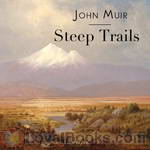 Steep Trails
Steep Trails
A collection of Muir's previously unpublished essays, released shortly after his death. "This volume will meet, in every way, the high expectations of Muir's readers. The recital of his experiences during a stormy night on the summit of Mount Shasta will take rank among the most thrilling of his records of adventure. His observations on the dead towns of Nevada, and on the Indians gathering their harvest of pine nuts, recall a phase of Western life that has left few traces in American literature... | |
By: John R. Jewitt (1783-1821) | |
|---|---|
 Captivity of Nearly Three Years Among the Savages of Nootka Sound
Captivity of Nearly Three Years Among the Savages of Nootka Sound
John Jewitt , a blacksmith by trade, spent the years 1803-1806 as a slave among the Nuu-chah-nulth people of Nootka Sound, off the Pacific Coast of Vancouver Island, Canada, after the trading vessel on which he served as armorer was attacked and its crew murdered by the native tribal chief Maquinna. Maquinna spared Jewitt's life on condition that the Jewitt would be his slave, would repair his muskets and make daggers, knives, and fishing gear for him. Jewitt's memoir is a considered a major source of information about the customs of the indigenous peoples of the Pacific Northwest. - Summary by Sue Anderson | |
By: John R. Lynch (1847-1939) | |
|---|---|
 The Facts of Reconstruction
The Facts of Reconstruction
After the American Civil War, John R. Lynch, who had been a slave in Mississippi, began his political career in 1869 by first becoming Justice of the Peace, and then Mississippi State Representative. He was only 26 when he was elected to the US Congress in 1873. There, he continued to be an activist, introducing many bills and arguing on their behalf. Perhaps his greatest effort was in the long debate supporting the Civil Rights Act of 1875 to ban discrimination in public accommodations.In 1884 Lynch was the first African American nominated after a moving speech by Theodore Roosevelt to the position of Temporary Chairman of the Republican National Convention in Chicago, Illinois... | |
By: John Relly Beard (1800-1876) | |
|---|---|
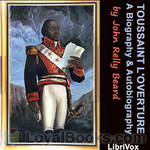 Toussaint L’Ouverture: A Biography and Autobiography
Toussaint L’Ouverture: A Biography and Autobiography
François-Dominique Toussaint L’Ouverture (1743-1803) rose to fame in 1791 during the Haitian struggle for independence. In this revolt, he led thousands of slaves on the island of Hispañola to fight against the colonial European powers of France, Spain and England. The former slaves ultimately established the independent state of Haiti and expelled the Europeans. L’Ouverture eventually became the governor and Commander-In-Chief of Haiti before recognizing and submitting to French rule in 1801... | |
By: John S. Mosby (1833-1916) | |
|---|---|
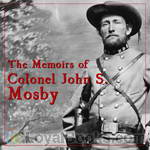 The Memoirs of Colonel John S. Mosby
The Memoirs of Colonel John S. Mosby
This is not a work of fiction! These are the actual memoirs of a legendary leader of partisans who bedeviled the Union army for years, almost within sight of the capitol. With only a few local men under command, John Singleton Mosby’s ability to strike fast and then melt away before an effective pursuit could be organized kept the Yankee forces awake and often snarled in knots. With daring feats like capturing a Yankee general out of his bed within his defended headquarters, Mosby made his name a synonym for guerrilla warfare... | |
By: John Stuart Mill (1806-1873) | |
|---|---|
 Autobiography of John Stuart Mill
Autobiography of John Stuart Mill
John Stuart Mill (20 May 1806 – 8 May 1873), British philosopher, political economist, civil servant and Member of Parliament, was an influential liberal thinker of the 19th century. He was an exponent of utilitarianism, an ethical theory developed by Jeremy Bentham, although his conception of it was very different from Bentham's. He was a forceful proponent in the fight for government intervention in social reform. | |
By: John Wesley Powell (1834-1902) | |
|---|---|
 Canyons of the Colorado, or The exploration of the Colorado River and its Canyons
Canyons of the Colorado, or The exploration of the Colorado River and its Canyons
John Wesley Powell was a pioneer American explorer, ethnologist, and geologist in the 19th Century. In 1869 he set out to explore the Colorado and the Grand Canyon. He gathered nine men, four boats and food for ten months and set out from Green River, Wyoming, on May 24. Passing through dangerous rapids, the group passed down the Green River to its confluence with the Colorado River (then also known as the Grand River upriver from the junction), near present-day Moab, Utah. The expedition’s route... | |
By: Joseph Benjamin Polley (1840-1918) | |
|---|---|
 Soldier's Letters to Charming Nellie
Soldier's Letters to Charming Nellie
Whether written in camp, in hospital, or in hospitable home, the letters tell a plain, unvarnished, and true story of the observations and experiences, the impressions and feelings, of a soldier whose only personal regret is that he could not be one of those whose paroles at Appomattox are patents incontestable that they fought for the right as they saw it, as long as there was a hope to encourage them. Though not intended as history, they are historical in the respect that they narrate actual occurrences in camp, on the march, and in the battle... | |
By: Joseph L. Lettau (1893-1950) | |
|---|---|
 In Italy with the 332nd Infantry
In Italy with the 332nd Infantry
A brief, personal recounting of the 332nd Infantry in World War I, including training in America, a brief billet in France, activities in Italy, and the return to America. Summary by KevinS | |
By: Joseph Lievesley Beeston | |
|---|---|
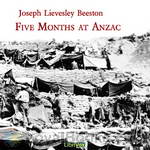 Five Months at Anzac
Five Months at Anzac
A Narrative of Personal Experiences of the Officer Commanding the 4th Field Ambulance, Australian Imperial Force from his leaving Australia December 1914 till his evacuation due to illness after 5 months at Gallipoli. Read to remember those who were there. (Introduction by Annise) | |
By: Joseph Plumb Martin (1760-1850) | |
|---|---|
 A Narrative of a Revolutionary Soldier
A Narrative of a Revolutionary Soldier
Joining the Continental Army as a teenager, Joseph Plumb Martin spent the next eight years fighting in the Revolutionary War as an enlisted man. His memoirs tell in detail his experiences during that time...the bitter cold, hunger, loss of life, long marches, and fear of battle. He also includes tales of fishing, hunting, and other activities...including encounters with a "saucy miss". His narrative reveals much about American life at the time and is one of the fullest and best accounts of the Revolutionary War, presented from a private's point of view.The book has been later republished under the names Private Yankee Doodle and Memoir of a Revolutionary Soldier. | |
By: Joseph Rogers (1821-1889) | |
|---|---|
 Reminiscences Of A Workhouse Medical Officer
Reminiscences Of A Workhouse Medical Officer
Joseph Rogers was an English physician, medical officer, and health care reformer in London. The system of poor-law dispensaries and separate sick wards, with proper staffs of medical attendants and nurses, was due to the efforts of Rogers and his colleagues. His memoir, published in 1889, contains an informative biography written by his brother. His career was not without conflict as his zeal sometimes offended governing boards. - Summary by David Wales | |
By: Joseph Smeaton Chase (1864-1923) | |
|---|---|
 California Coast Trails
California Coast Trails
In 1911, decades before California's coast Highway 1 was built, an Englishman rode 2000 miles on horseback the length of California, from Mexico to Oregon. On the way he is courteously received at isolated ranches, has many quiet adventures, and is generally amazed by the beauty of our coast. A classic early California travelog. Chase was born in Islington (London) and but lived most of this life in the California desert.Here are Chase's major landmarks, first going south and then turning north:Chap... | |
By: Kate John Finzi | |
|---|---|
 Eighteen Months in the War Zone: A Record of a Woman's Work on the Western Front
Eighteen Months in the War Zone: A Record of a Woman's Work on the Western Front
"But it is not for those who heard the call in the later months so much as in memory of those early heroes of Mons, who knew the bitterness of a valiant retreat, the horror of forced marches along parched roads, with only the prod of the next man's bayonet to keep him awake, and only a flap cut from the tail of his shirt between the pitiless sun and the dreaded delirium that would leave him a prey to the Huns' barbarities; in memory of these it is that I take up the pen to run the gauntlet of a thousand critical eyes on a way fraught with difficulties." ~ Kate John Finzi | |
By: Kate Percival | |
|---|---|
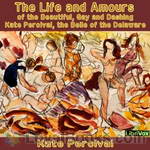 The Life and Amours of the Beautiful, Gay and Dashing Kate Percival, the Belle of the Delaware
The Life and Amours of the Beautiful, Gay and Dashing Kate Percival, the Belle of the Delaware
This surprisingly explicit sample of Victorian erotica follows the sexual awakening and subsequent adventures of its author, Kate Percival, the "belle of the Delaware." Content warning: this one is definitely NC-17 rated. | |
By: Katharine Carl (1865-1938) | |
|---|---|
 With the Empress Dowager of China
With the Empress Dowager of China
Through the eyes of an artist, With the Empress Dowager of China provides a glimpse of life in the Chinese Imperial Court, unseen by any other Westerner. In 1903, Katharine Carl, an American artist, was invited to paint a portrait of Cixi, the Empress Dowager of China, for display at the 1904 Exhibition at St Louis, USA. For nine months from the 5th of August 1903 when the painting was begun, Miss Carl lived within the Chinese Imperial Court, residing at the Summer Palace, Winter Palace and Sea Palace... | |
By: Kenneth Grahame (1859-1932) | |
|---|---|
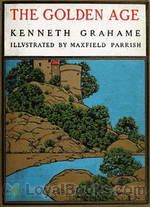 The Golden Age
The Golden Age
If you've loved and cherished The Wind in The Willows, you'll be delighted to read The Golden Age. In this book of reminiscences by Kenneth Grahame, the much loved creator of Winnie The Pooh, readers are granted an insight into the writer's childhood. The opening lines of the Prologue provide a poignant reminder of Grahame's childhood. When he was just five, his mother died in childbirth and his father who had a long standing problem with alcoholism consigned his four children, including the newborn baby, to the care of their grandmother in Berkshire... | |
By: Ki no Tsurayuki (872-945) | |
|---|---|
 The Tosa Diary
The Tosa Diary
Ki no Tsurayuki was a Japanese waka poet of the Heian period. In 905, he was one of the poets ordered to compile the "Kokinshu - Collected Japanese Poems of Ancient and Modern Times". He is also one of the Thirty-six Poetry Immortals of Japan. The Tosa Diary, written in 935, is considered the major work of Tsurayuki. It is an account of his return to the capital Kyoto from Tosa province, where he had served as governor since 930. The journey is by boat, and Tsurayuki tells about his sea sickness and fear of pirates, his impressions of the coast, and the various offerings to placate the gods of the sea... | |
By: L. A. Abbott (1813-??) | |
|---|---|
 Seven Wives and Seven Prisons
Seven Wives and Seven Prisons
This work the author claims is indeed a true story of how he happened to be married seven times to seven different women and the rollicking, hilarious events that led (or stumbled) to the marriages and the ah–disassembling/failing/failures of each said marriage which happened oftentimes to land him in prison. The summarist finds the work a very tongue-in-cheek diatribe/lament/account of his obsessive zeal in ‘marrying the right one’, but is also the mirthful chronicle of said author’s very unconventional adventures. | |
By: Lady Lucie Duff-Gordon (1821-1869) | |
|---|---|
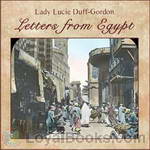 Letters from Egypt
Letters from Egypt
As a girl, Lady Duff-Gordon was noted both for her beauty and intelligence. As an author, she is most famous for this collection of letters from Egypt. Lady Duff-Gordon had tuberculosis, and went to Egypt for her health. This collection of her personal letters to her mother and her husband. By all accounts everyone loved her, and the letters are very personal in style and content. The letters are as much an introduction to her person as a record of her life on the Upper Nile. | |
By: Lady Sarah Wilson (1865-1929) | |
|---|---|
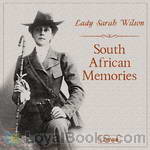 South African Memories
South African Memories
Lady Sarah Isabella Augusta Wilson was the aunt of Winston Spencer Churchill. In 1899 she became the first woman war correspondent when she was recruited to cover the Siege of Mafeking for the Daily Mail during the Boer War. She moved to Mafeking with her husband at the start of the war, where he was aide-de-camp to Colonel Robert Baden-Powell. Baden-Powell asked her to leave Mafeking for her own safety after the Boers threatened to storm the British garrison. This she duly did, and set off on a... | |
By: Laura Lee Davidson (1870-1949) | |
|---|---|
 Winter of Content
Winter of Content
A charming memoir recounting 10 months spent among the country people of Ontario at the outbreak of the Great War. Resplendent in its descriptions and heartwarming in its depictions of the 'simple' folk living along Many Islands Lake. - Summary by KevinS | |